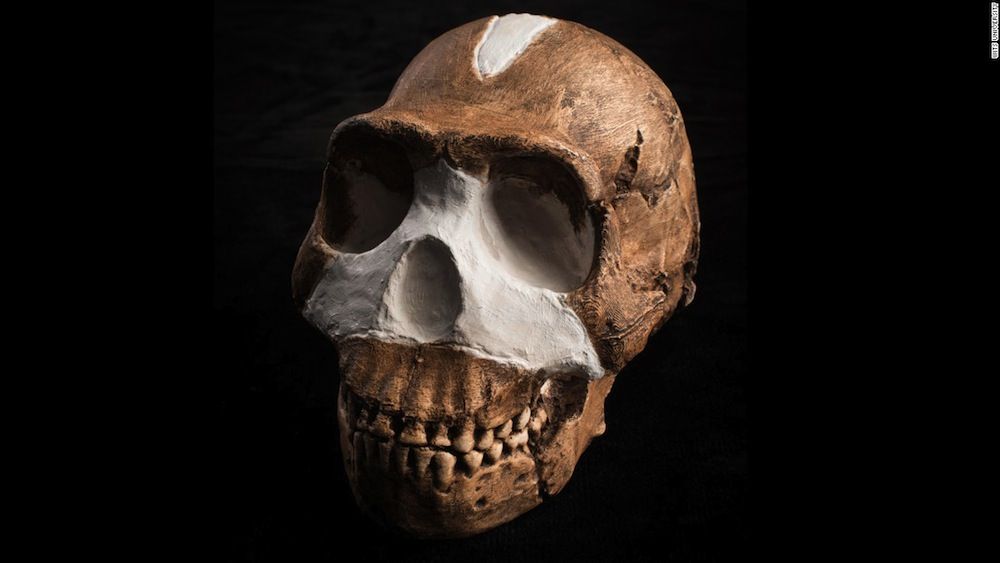Newfound Human Species Suggests Africa Was Evolutionary Melting Pot

The most recently discovered extinct human species may have lived less than 1 million years ago, researchers have discovered.
This finding suggests that a diverse range of human species might have lived at the same time in Africa, just as they might have in Asia, researchers said.
In 2015, scientists reported South African fossils of a hitherto-unknown relative of modern humans that possessed an unusual mix of features, such as feet adapted for a life on the ground but hands suited for a life in the trees. The fossil's discoverers named the species Homo naledi, and noted that although the early human had a brain about the size of an orange, these humans may have performed ritual burials of their dead. [See Images of Homo Naledi Discoveries]
Frustratingly, the age of H. naledi remains unknown. "This has been one of the biggest points of consternation for other researchers," said study co-author Mark Collard, a biological anthropologist at Simon Fraser University in British Columbia, Canada.
Since scientists don't know when H. naledi lived, it's difficult to determine how exactly the species fits into the family tree of hominins, those species composed of humans and their close relatives. Given some of H. naledi's primitive, ape-like features, some researchers argued that the species might not be a member of the human lineage Homo, but might have belonged to Australopithecus, the most likely ancestors of humans.
Dating H. naledi fossils
To deduce the age of H. naledi and the species' relationships to other hominins, Collard and his colleagues developed a computer model analyzing skull, jaw and tooth features of both early and late hominins. For instance, the model includes Homo erectus, the most likely ancestor of modern humans, Homo sapiens.
The new model suggests "that the new species, H. naledi, is most closely related to the existing species of genus Homo and the recently discovered South African australopith species Australopithecus sediba, but the data do not allow us to determine which of the species within that group H. naledi is most closely related to," Collard said.
Sign up for the Live Science daily newsletter now
Get the world’s most fascinating discoveries delivered straight to your inbox.
The new model also suggests that H. naledi fossils were about 912,000 years old. For comparison, prior work suggested that modern humans arose on Earth about 200,000 years ago.
"The date is surprising, because it's relatively young. Given the small brain size and other primitive characteristics of H. naledi, I think most researchers have assumed that it is considerably older than 900,000 years old," Collard said.
This age estimate suggests that H. naledi was a member of Homo and not Australopithecus, the scientists said. The timing also suggests H. naledi fossils were not just unusual specimens of H. erectus, but their own species, the researchers added.
Hominin diversity
Collard said he expected this new age estimate would draw a lot of skepticism from other scientists. "Their skepticism will be entirely understandable," he said. "Even now, I remain a bit skeptical about it. I think it's well-enough supported to put it out there, but I'm not about to bet my house on it. That said, I think it's worth the field pondering the implications for our understanding of human evolution if the age estimate is about right and H. naledi is around a million years old."
For instance, these findings suggest that small-brained human species such as H. naledi may have lived at the same time as larger-brained human species in Africa such as H. erectus. Similarly, recent studies have suggested that small-brained human species such as the "hobbit" Homo. floresiensis and larger-brained human species such as H. erectus and H. sapiens lived contemporaneously in Asia.
"One of the questions the possibility of such diversity raises is, 'Who made the stone tools we find in those parts of the Old World where we've got evidence for multiple species of Homo?'" Collard said. "I don't think we can assume that it was just the large-brained Homo species necessarily."
In the future, the researchers hope to extend their model to more than just the skulls of hominins, Collard said. This may help better pinpoint which hominin species H. naledi is most closely related to.
The scientists detailed their findings in the August issue of the Journal of Human Evolution.
Original article on Live Science.












